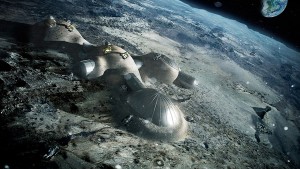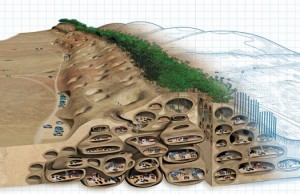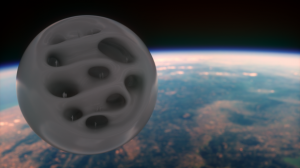Overtime humanity has alerted the landscape to better fit their needs, to provide shelter, and comfort from the elements. Over time these structures evolved, and so did their building material point to the point that they began to dominate the natural landscape. Recently though, architecture has to tried to reconnect with the natural landscape, using form and materials to reestablish a connection to the roots of architecture using natural forms. Looking down the road new questions begin arise, especially the question of how do we get off earth. Freeman Dyson has approached this question, talking about how we need to grow spaceships, not build them. He goes on to explain the only two things holding us back right now is a way to get there, and a destination. Growing may quiet accurately be the best way to describe the solution, as bacteria has become a new building material.
Bacteria has already been thought about it various projects, such as Magnus Larrson’s Greenwall in Africa, which uses bascillus pasterurii to solidify sand, and produce shelter. Another mind studying this new material is Enricho Dini, who is working with the European Space Agency to grow a base on the moon. Bacteria is a prime building material due to its ability to rapidly reproduce, and adaptability, making it cheaper and faster than conventional building methods. This methodology of building has a wide range of potential, simply from growing a facade for a building, to turning a barren lands ape into a potential habitable city, to possibly even growing a planet.



